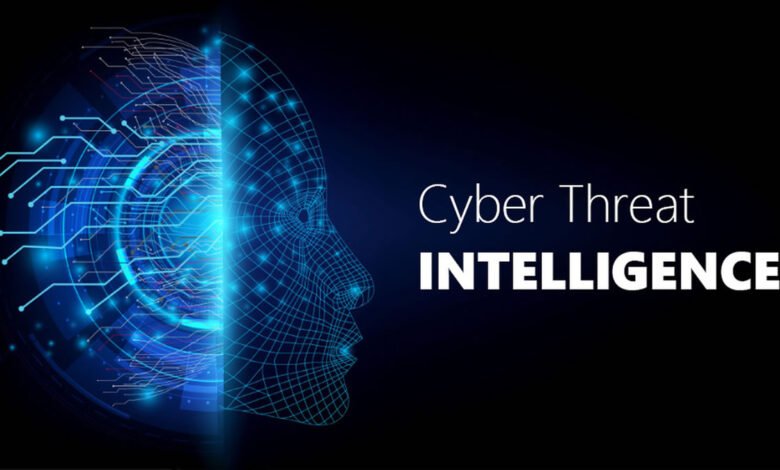
Most cyber threats have never been more pronounced in an era dominated by digital exchanges. As businesses and people guide the complex web of the internet, the need for solid cybersecurity standards becomes essential. One of the necessary components of this weapon is utilizing Cyber Threat Intelligence (CTI) tools.
The opening segment, “Introduction,” is the cyber gateway into digital attention. In this digital age, understanding the importance of Cyber Threat Intelligence Tools becomes critical, revealing a forceful approach to safeguarding against the ever-evolving landscape of online threats.
Definition of Cyber Threat Intelligence Tools
Cyber Threat Intelligence Tools are technologies and processes developed to collect, analyze, and research data to determine and reduce possible cyber threats. These tools play a critical role in maintaining the digital security of communities and individuals paired.
Importance in the Digital Landscape
In a landscape where cyber threats are diverse and ever-evolving, CTI tools provide the necessary senses to stay one step forward from hostile actors. They designate organizations to understand the threat landscape, enabling proactive measures to protect sensitive information.
Types of Cyber Threat Intelligence Tools
Types of Cyber Threat Intelligence Tools” categorizes the digital guardians that stand sentinel in the virtual realm. From Open-Source Intelligence (OSINT) unraveling the web’s public tapestry to Malware Analysis Tools dissecting the malicious, each type represents a crucial instrument fortifying defenses against diverse cyber threats.

Open-Source Intelligence (OSINT)
Open-source intelligence involves collecting information from publicly available quotations. CTI tools leveraging OSINT help understand the external factors that may pose a threat.
Dark Web Monitoring
Monitoring activities on the dark web is crucial for early detection of potential threats. Cyber Threat Intelligence Tools specialized in dark web monitoring keep organizations informed about discussions and activities that may impact their security.
Malware Analysis Tools
These tools examine damaging software, providing in-depth insights into their functionality. Malware analysis tools are resources for understanding cybercriminals’ strategies and techniques.
Incident Response Platforms
Incident Response Platforms facilitate recognizing, managing, and reducing security happenings. They are critical in undervaluing the effect of a cyber-attack.
Key Features of Useful Cyber Threat Intelligence Tools
Highlights the essential features that transform mere tools into cyber guardians. These features contain real-time prowess, solving intricate threat indicators, streamlined data analysis, and presenting insights through user-friendly reporting, collectively crafting an impenetrable shield against the evolving landscape of digital threats.
Real-time Monitoring
Effective CTI
Tools offer real-time monitoring capabilities, ensuring organizations receive instant alerts about potential threats. This proactive approach allows for swift responses to emerging cyber risks.
Threat Indicators
CTI tools provide a wealth of threat indicators, including IP addresses, domains, and malware signatures. These indicators help security teams recognize and neutralize potential threats before they can cause harm.
Data Aggregation and Analysis
Centralized data aggregation and analysis are fundamental features of robust CTI tools. They enable organizations to collate and process information efficiently, extracting actionable insights to bolster their cybersecurity defenses.
Reporting and Visualization
User-friendly reporting and visualization tools are essential for understanding complex threat intelligence data. Clear visualizations aid decision-makers in understanding the threat landscape and making informed choices.
Benefits of Using Cyber Threat Intelligence Tools
Illuminates the strategic advantages presented by these digital guardians. From promoting forceful security measures to amplifying happening response capabilities, these tools empower organizations to make informed decisions, optimize resources, and strengthen their defenses against the dynamic landscape of cyber threats.

Proactive Security Measures
CTI tools empower organizations to adopt forceful security measures by providing real-time wisdom and threat arrows. This aggressive stance is essential in stopping cyber attacks before they can use vulnerabilities.
Incident Response Enhancement
CTI tools significantly enhance incident response capabilities. With complex threat intelligence, organizations can react swiftly and actually to security incidents, minimizing the possible damage.
Decision-Making Support
Informed decision-making is an essential benefit of leveraging CTI tools. Decision-makers can use the collected intelligence to give resources strategically, prioritize security industries, and execute targeted security measures.
Resource Optimization
Efficient use of resources is a direct outcome of employing CTI tools. Organizations can optimize their cybersecurity resources and allocations by focusing on identified threats and exposures.
Challenges in Implementing Cyber Threat Intelligence Tools
Unveils the hurdles organizations face in deploying these digital securities. From the intricacies of integration and potential cost constraints to addressing skill gaps, these challenges demand strategic solutions. Overcoming these obstacles is essential to harness the full potential of Cyber Threat Intelligence Tools in fortifying digital landscapes against evolving cyber threats.
Complexity and Integration Issues
Implementing CTI tools can be complex, requiring integration with existing security infrastructure. Overcoming these challenges involves careful planning and collaboration between IT and security teams.
Cost Concerns
Budgetary constraints often need to be revised in adopting advanced CTI tools. Organizations must weigh the potential costs against the benefits and explore cost-effective solutions without compromising security.
Skill Gaps
Effectively utilizing CTI tools requires skilled personnel. Addressing skill gaps through movement and sourcing is crucial for maximizing the usefulness of these tools.
Best Practices for Utilizing Cyber Threat Intelligence Tools
Explores the art of leveraging digital guardians effectively. This section unveils the importance of continuous training and skill development, seamless integration with existing security infrastructure, encouraging collaboration, and stressing ongoing evaluation. These strategic practices designate organizations to navigate the complex landscape of cyber threats with skill and resilience.

Regular Training and Skill Development
Continuous training and skill development industries are essential to keep security personnel updated on the latest movements and techniques in cyber threat intelligence.
Integration with Security Infrastructure
Integration with existing security infrastructure ensures that CTI tools operate seamlessly within the organization’s broader security framework.
Collaboration and Information Sharing
Encouraging collaboration and information communication within the cybersecurity society improves collective security against evolving cyber threats.
Continuous Evaluation and Improvement
Regular evaluation of CTI tools’ performance and continued improvement processes are essential for adjusting to the dynamic nature of cyber threats.
Case Studies
Delves into real-world descriptions, unraveling tales of success and difficulty in cybersecurity. This section inspires the practical applications of Cyber Threat Intelligence Tools through concrete examples, offering valuable insights and lessons drawn from the front lines of digital defense.
Successful Implementation Stories
Exploring success stories of organizations that have effectively implemented CTI tools provides valuable insights and practical lessons for others.
Lessons Learned from Cyber Attacks
Analyzing happenings where CTI tools played an essential role in mitigating cyber attacks clears light on the importance of bold cybersecurity measures.
Future Crazes in Cyber Threat Intelligence
Envisions the evolution of digital guardians. As artificial intelligence and machine learning intertwine, blockchain fortifies security, and predictive analytics shapes a proactive defense. This section expects a dynamic landscape where Cyber Threat Intelligence Tools become defenders and anticipators, staying forward in the digital chess game.

Artificial Intelligence and Machine Learning Integration
Integrating artificial intelligence and machine learning into CTI tools will revolutionize threat detection and reaction qualifications.
Blockchain in Cybersecurity
Adopting blockchain technology in cybersecurity is predicted to improve the goodness and security of threat intelligence data.
Predictive Analytics
The future of CTI tools may involve more refined predictive analytics, allowing organizations to expect and mitigate cyber threats before they appear.
Conclusion
“In the Cipher’s Embrace: Conclusion” encapsulates the journey through the cyber maze. Summarizing Cyber Threat Intelligence Tools’s pivotal role leaves readers with a call to action. The conclusion affirms the necessity of these digital guardians, urging a proactive stance in the perpetual battle against evolving digital adversaries.
Recap of Importance
In conclusion, cyber threat intelligence tools are required in today’s digital landscape. They empower organizations to proactively secure digital purchases, understand the threat landscape, and respond to cyber threats.
Encouragement for Adoption
The constant evolution of cyber threats necessitates a forceful strategy for cybersecurity. Organizations are inspired to embrace and execute cyber threat intelligence tools to stay ahead in the continuous action against cyber threats.
FAQs
How do these tools enhance incident response?
Cyber threat intelligence tools greatly enhance an organization's incident reaction capabilities by providing real-time monitoring, complex threat arrows, and actionable insights.
Are there any free cyber threat intelligence tools available?
Yes, free and open-source cyber threat intelligence tools allow organizations with budget constraints to enhance their cybersecurity posture.
How can organizations overcome challenges in implementing these tools?
Incident Response Platforms facilitate identifying, managing, and reducing security incidents. They are essential in minimizing the impact of a cyber-attack.
What trends can we desire in the future of cyber threat intelligence?
The future of cyber threat intelligence involves the integration of unnatural intelligence, machine learning, blockchain, and predictive analytics to improve threat detection and response capacities.








